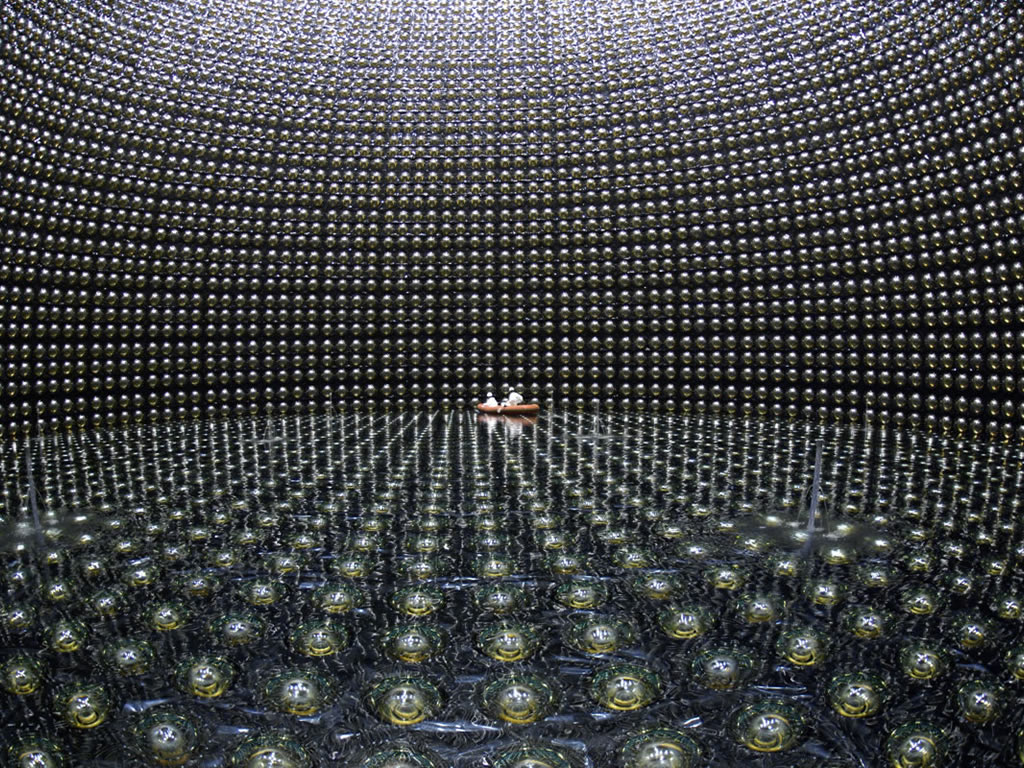We like to think that science has all the answers and that the more we learn the more we’ll be able to predict and control our environment. But what if there was a limit and we couldn’t predict something like billiard ball movements with any accuracy beyond the first eleven collisions ?
Observing & Predicting at the Atomic Level -Heisenberg’s Uncertainty Principle
Many people have heard of Heisenberg’s Uncertainty Principle. This states that in observing elementary particles it is impossible to determine both the position of a particle and its velocity. In order to observe at all you have to use some kind of procedure that affects what you are looking at. If you imagine a world in which we could perceive objects only by touch, the mere action of poking at an object to see where it was could change its position. If it was moving, the ‘poke’ would also change its speed or direction of travel.
It’s a bit like this with atomic particles. If we try to shine a beam of light or other energy on the particle in order to ‘see’ it, the moment the beam hits the particle it changes one of its characteristics – its position or velocity – from what it would have been if we hadn’t looked.
This is very much an oversimplification. It sounds as if it is somehow the measuring equipment which is at fault, when in fact, for Heisenberg, the Uncertainty Principle reflects a basic fact about atomic particles, that physical states with definite position and momentum don’t exist. Once you measure one the other becomes indeterminate.
Observing & Predicting at the Macro Level – In the Real World
While this was an important observation for particle physics it’s always presented as having limited relevance to the world of big objects, such as tables and cricket balls and dogs and so on. These are made up of so many billions of atoms and the uncertainties in measuring any one of them are so small that with the velocities and distances that are of interest to us in the macro world, any effect of the Uncertainty Principle was thought to be undetectable.
Before anything was known about the physics of atoms, the French mathematician and astronomer the Marquis de Laplace envisaged a ‘demon’ with a complete knowledge of the precise position and velocity of every atom in the universe and said that, with sufficient calculating power and using Newton’s laws, he could calculate the entire course of the future of the universe. Even after Heisenberg’s insight, it is often believed that with a simple physical system, such as a billiard table and balls, it is possible to calculate the future path of the balls as far ahead as you like, equipped with an accurate knowledge of their starting positions and velocities and using Newton’s laws of motion.
In fact, this is not true. An American physicist, D. J. Raymond, calculated forty years ago that you could predict reasonably accurately the paths and velocities of the balls on a billiard table for the first eleven collisions, and after that, however precisely you did your measurement, the combined uncertainties associated with each of the collisions would be magnified with each collision until it would be impossible to say what would happen after the eleventh.
To give an example of his reasoning: however accurately we aim the cue ball at the first ball we want to strike, we cannot measure the position of that ball with an accuracy below a certain very small figure, so there will be a tiny error in our estimate of where the ball will go after we hit it. This very small mistake will produce a disproportionate error in how the next ball moves and so on, and so this uncertainty, which a minuscule figure, will be magnified dramatically with further collisions. Raymond made certain assumptions about the mass and radius of the balls, the distance between collisions, and so on and worked out how many collisions there would have to be before the errors built up so much that it would be impossible to say with any certainty where any of the balls were. That’s how he arrived at the calculation that after eleven or so collisions it would be impossible to forecast the motion of the balls with any useful degree of accuracy.
Of course, in the real world, there are so many larger sources of inaccuracy than these quantum uncertainties – irregularities in the billiard table or the balls, the shakiness of the player’s hand, even the effects of small changes in temperature – that realistic prediction will fail much earlier than the eleventh collision. But Laplace would be astonished to learn that not only could his ‘demon’ not predict the future state of the universe from a comprehensive knowledge of its current state, he wouldn’t even be able to predict the behaviour of a few billiard balls over the following ten seconds or so.




